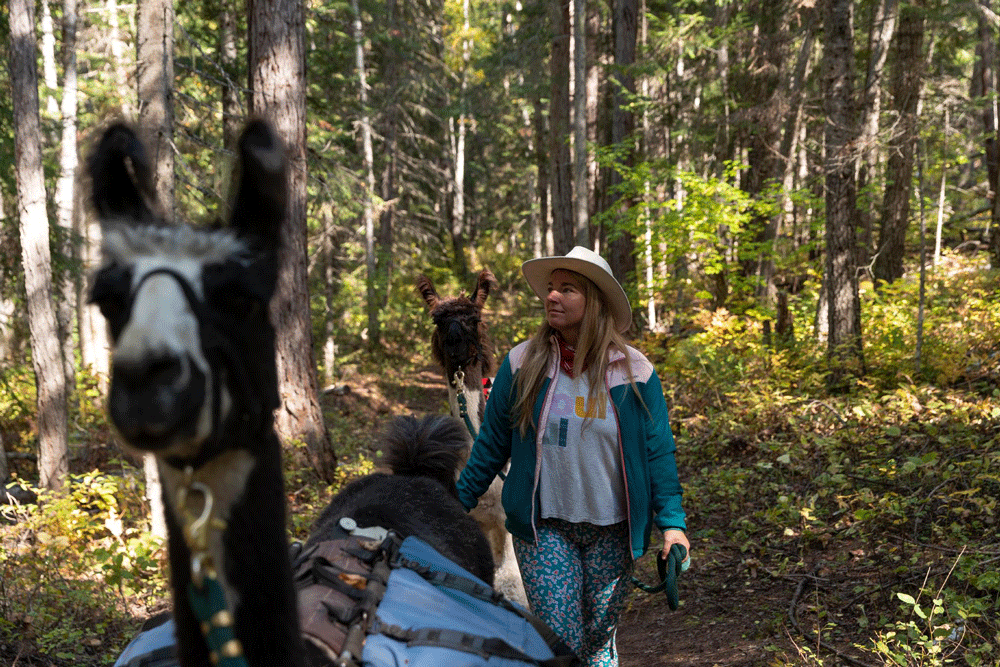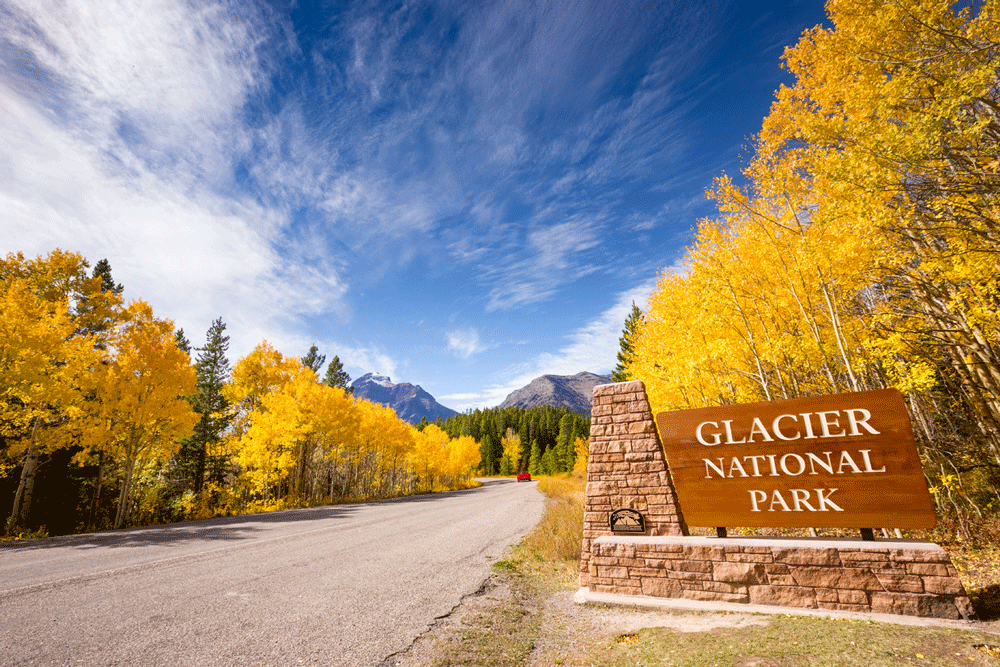Seven-Day Two-Nation Vacation
Spend a week exploring some of our continent’s most exquisite landscapes on a two-nation getaway between the U.S. and Canada, where the majesty of the Rocky Mountains is simply stunning at every turn. Begin this once-in-a-lifetime loop tour in Kalispell, Montana (or from British Columbia or Calgary, Alberta). Experience the epic vistas of Kootenay National Park, Banff National Park (including Lake Louise), Waterton Lakes National Park and Glacier National Park (including the famous Going-to-the-Sun Road). The sightseeing is absolutely awe-inspiring, and each region offers something unique and unforgettable—from relaxing hot springs and incredible culinary experiences to historic charm and local allure.
HIGHLIGHTS
- Banff National Park
- Fort Steele Heritage Town
- Glacier National Park
- Kootenay National Park
- Lake Louise
- Lake Koocanusa
- Tobacco Valley Historic Village
- Waterton Lakes National Park
Day 1: Northwest Montana and Eureka
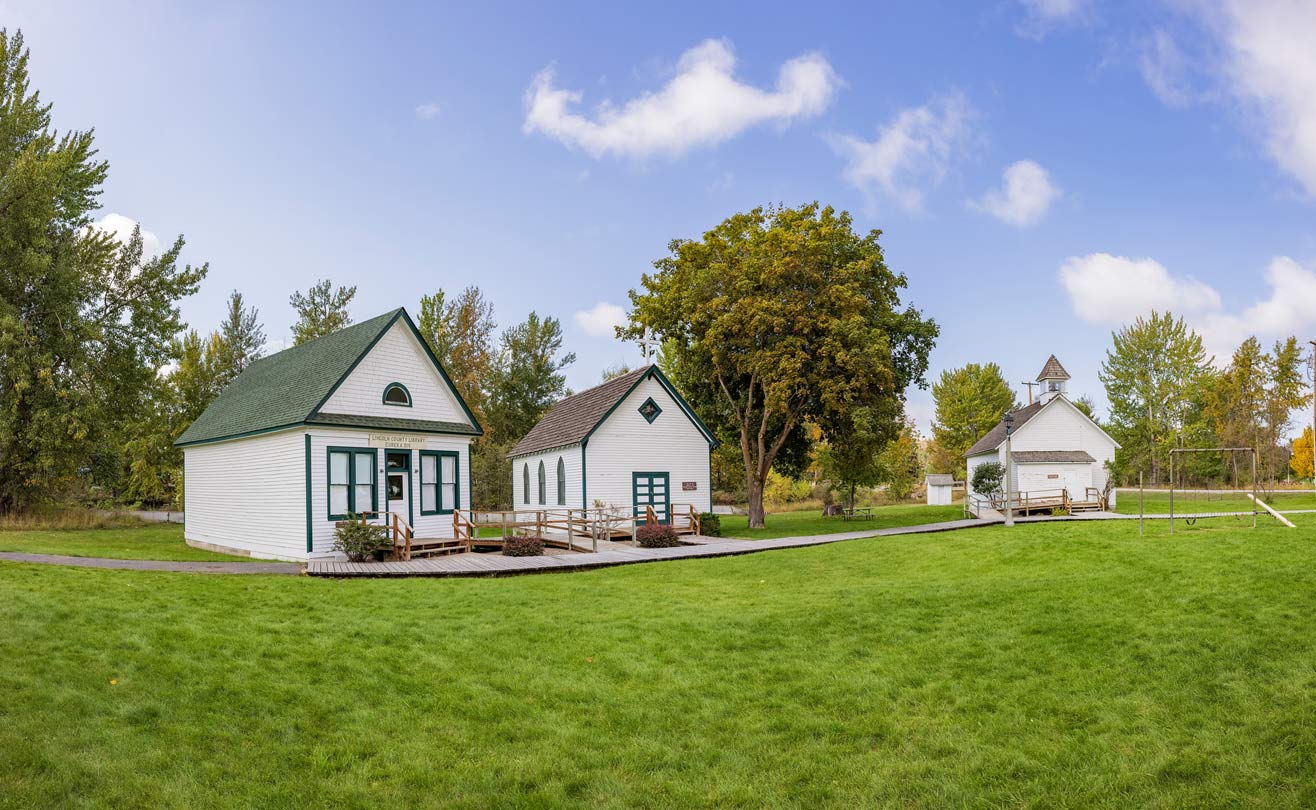
STOPS:
- 1Eureka
- 2Tobacco Valley Historical Village
- 3Ten Lakes Scenic Area
- 4Lake Koocanusa
- 5Abayance Bay Marina
Your first day begins in Montana. Fly into Glacier Park International Airport (FCA) in Kalispell. Car rentals are available from the airport. U.S. Highway 93 passes through the charming town of Whitefish, where you can grab a quick bite at one of the local eateries on Central Avenue. The next stop off US-93 is the quaint town of Eureka, which sits on the banks of the Tobacco River. Eureka’s small-town hospitality is evident with welcome signs and flag-lined streets. Stop in at the Tobacco Valley Historical Village—a collection of restored buildings from the late 1800s to the early 1900s. Have a picnic at Riverside Park, which hosts a farmers market every Wednesday from 3:30 p.m. to 6 p.m. in the summer months.
This is the perfect jumping off point to outdoor adventure in every direction, including Ten Lakes Scenic Area and surrounding U.S. Forest Service land great for hiking, fishing and camping. In the winter, this is prime landscape for snowmobiling and cross-country skiing trails.
Visit Abayance Bay Marina on nearby Lake Koocanusa to rent a boat or jet ski, and enjoy the 90-mile-long lake that crosses the U.S./Canada border, spanning 48 miles in the U.S. and 42 miles in Canada). The lake was formed by the damming of the Kootenai River with the 422-foot-tall Libby Dam, located 16 miles north of Libby, Montana.
Day 2: British Columbia, Canada
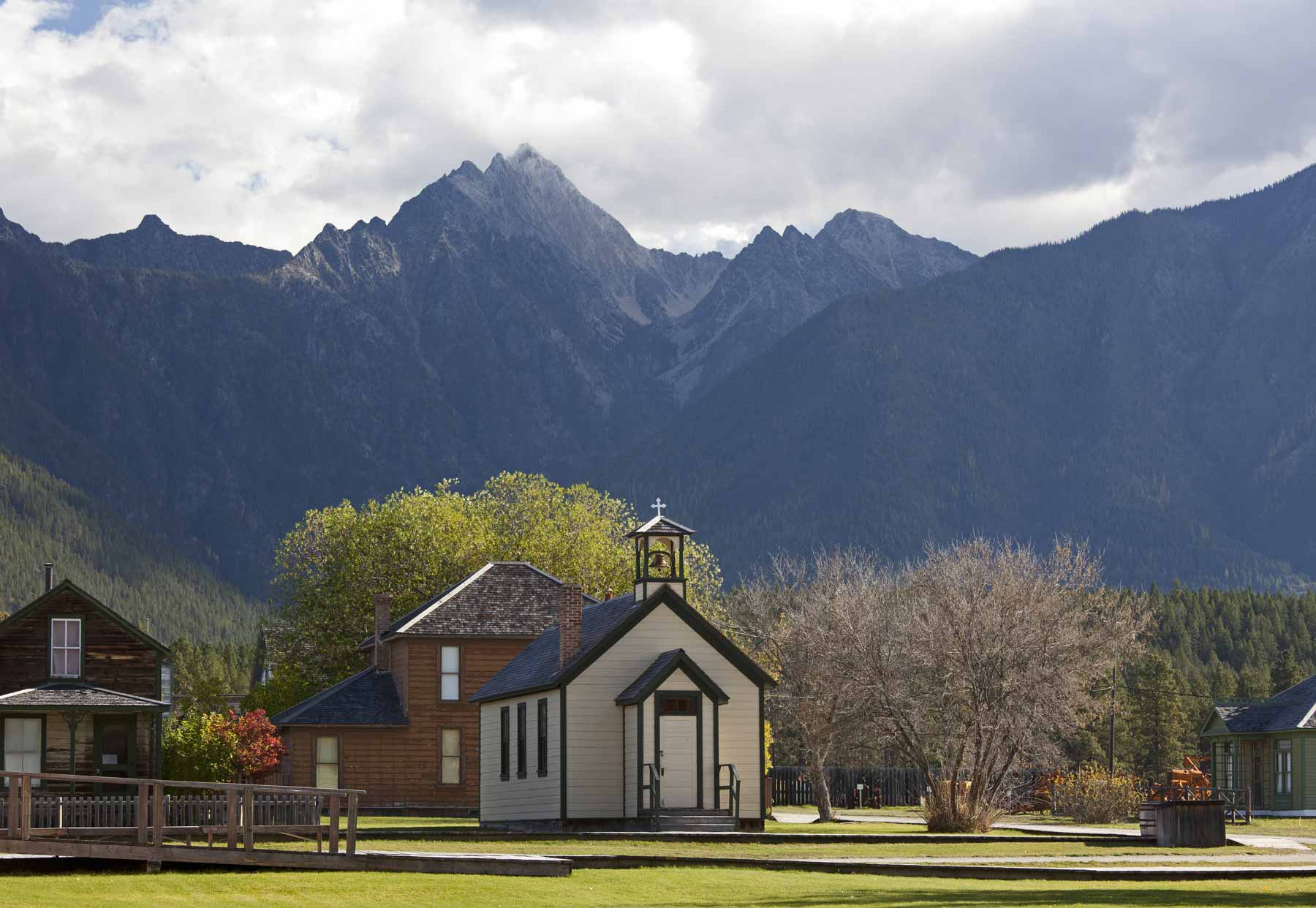
STOPS:
- 6British Columbia
- 7Fort Steele Heritage Town
- 8Canal Flats Overlook
- 9Fairmont Hot Springs
- 10Radium Hot Springs
A short 10-minute drive north of Eureka is the Port of Roosville U.S. Customs and Border Protection. This border crossing into British Columbia is open 24 hours a day, seven days a week.
U.S. Highway 93 becomes BC 93/95 in British Columbia. Follow BC 93/95 north to the town of Fort Steele Heritage Town. Fort Steele was an outpost for the North-West Mounted Police who came to bring law to the itinerant gold seekers from America’s wilder West. Here, over 60 buildings have been restored since the site was designated a Provincial Heritage Site in 1961. Visit the heritage tradesmen and women who were essential to daily life, including blacksmiths, leather workers, dressmakers, tinsmiths and gold panners. See livestock demonstrations, including daily care and feeding of the Clydesdales that provided horse-power back in the day. A must is the 20-minute train ride that puts you in the seats of earlier travelers and gives you an idea of what it must have been like to ride the trains pulled by authentic steam locomotives from the early 1900s.
Continue your travels north through the beautiful sprawling pasturelands of the valley with the jagged Canadian Rockies to the east eventually coming into Canal Flats. Be sure to stop at Canal Flats Overlook for a breathtaking view of the Kootenay River Valley and Columbia Lake. This lake is the originating source of the Columbia River, which eventually flows south through the Columbia River Gorge between Washington and Oregon and empties into the Pacific Ocean at Astoria, Oregon.
As your travels continue north on BC 93/95, you’ll find hot springs to stop in for a soak. Visit one of British Columbia’s legendary attractions, Fairmont Hot Springs, Canada’s largest natural hot springs. Accommodations range from RV parks to hotel lodging. Further on up the highway is the very charming village of Radium Hot Springs, which greets visitors with a welcome sign that reads “The Mountains Shall Bring Peace to the People” at the Radium Hot Springs Visitor Centre. Here you’ll find friendly and knowledgeable visitor information counselors on site to offer travel tips and point you in the right direction.
Overnight in Radium Hot Springs.
Day 3: Kootenay National Park/Banff National Park
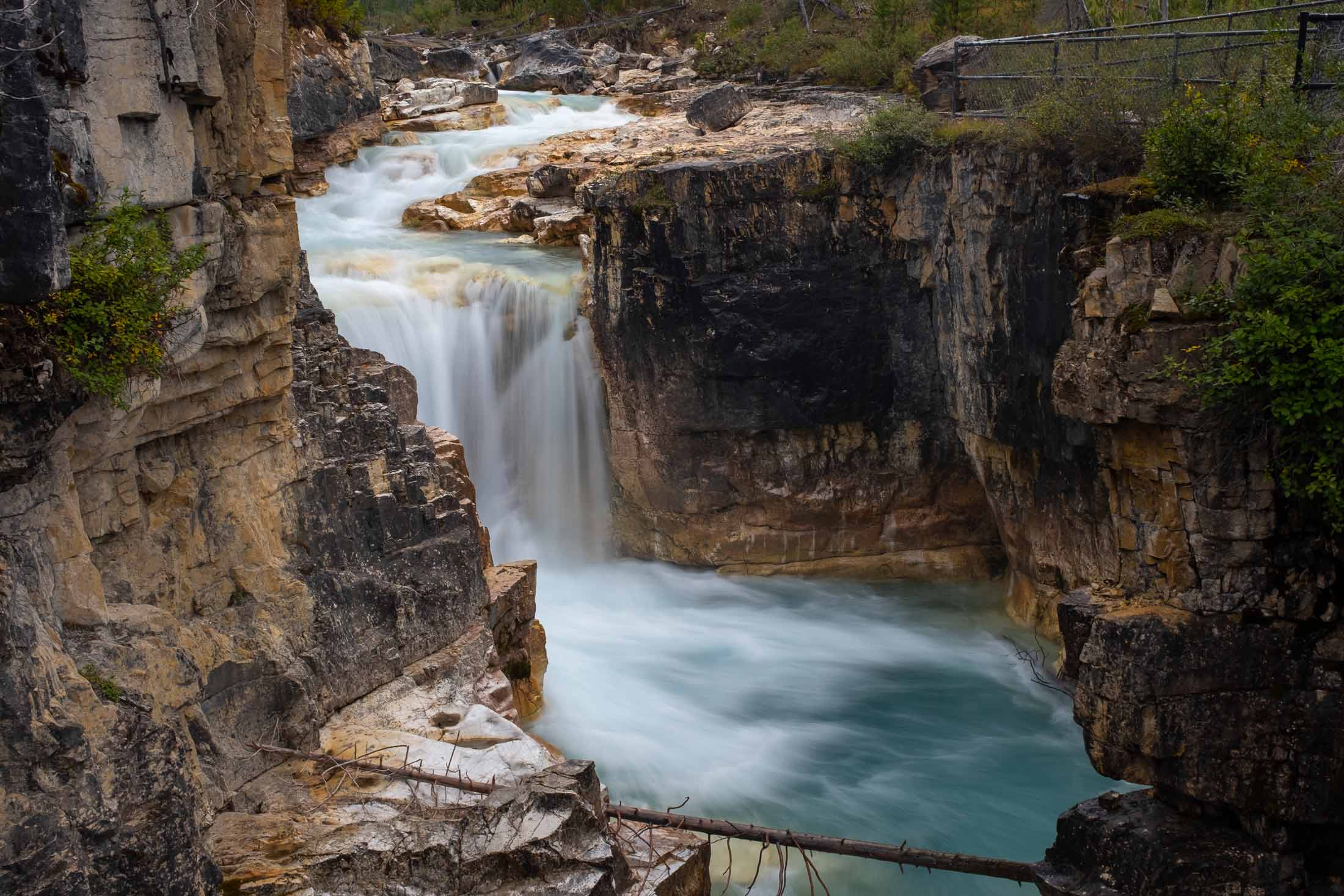
STOPS:
- 11Kootenay National Park
- 12Alberta
- 13Banff National Park
Today would be a great day to gather a picnic lunch as you head out of Radium on BC 93. The west gate of Kootenay National Park is located just outside of town. Sinclair Canyon serves as the entry into Kootenay National Park with striking cliffs of colored rocks on either side. Make sure you allow some time this morning to soak in the natural soothing waters of Radium Hot Springs while being surrounded by dramatic cliffs. And don't worry if you forgot the towels or swimsuits, they are available for rent, along with lockers.
There are post-soak hiking possibilities aplenty, so take your lunch, bear spray and binoculars and enjoy your day in Kootenay National Park. Don't forget to stop at the many viewpoints overlooking the Kootenay Valley or at the Continental Divide separating the Pacific and Atlantic watersheds.
BC 93 will take you through Kootenay National Park and into Alberta, Canada and straight into Banff National Park. Take a left on Alberta's Highway A1 toward Lake Louise Village for the evening.
Overnight in Lake Louise.
Day 4: Lake Louise/Banff
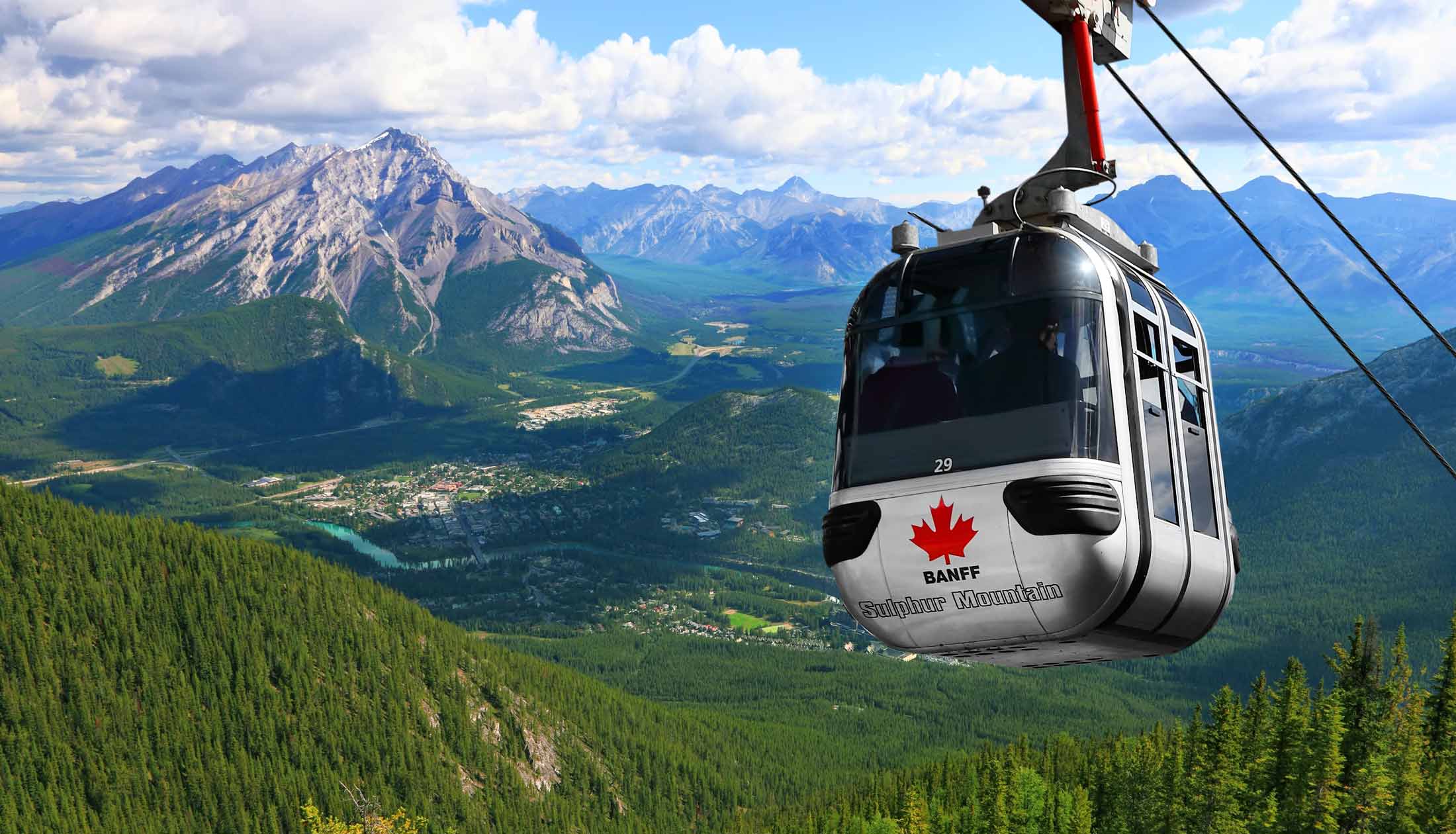
STOPS:
- 14Lake Louise
- 15Lake Agnes Tea House
- 16Fairmont Chateau Lake Louise
- 17Valley of the Ten Peaks + Moraine Lake
- 18Banff
Make this an early morning for the very best views of Lake Louise before the crowds begin to form (before 9 a.m. or after 7 p.m.). With more than 3.8 million visitors a year, Lake Louise Village in Banff National Park is the busiest area of the Canadian National Parks. The Victoria Glacier on Mount Victoria forms a dramatic backdrop at the head of Lake Louise for the most photographed location in the Canadian Rockies. Rent a canoe and explore the lake or book a horseback ride with Timberline Stables.
Take the famed hike to Lake Agnes Tea House, open June 4 to the second Monday in October, located 3.5 kilometers (2.1 miles) from the Lake Louise parking lot. The tea house—open since 1905—is set on the shores of Lake Agnes. Together with Mirror Lake and Lake Louise, these three lakes are often called the “Lakes in the Clouds.” Choose from more than 100 varieties of teas, along with hearty homemade soups and sandwiches made with freshly baked bread.
If not for an overnight, be sure to step into the Fairmont Chateau Lake Louise to see the elegant yet relaxed atmosphere of the 552-room luxury resort. The 125-year-old resort also boasts the finest dining around. Choose from The Walliser Stube or fine dining at The Fairview, or enjoy the tradition of afternoon tea with views of Lake Louise.
Not far away and a must see is Moraine Lake and the Valley of the Ten Peaks, offering fantastic photo opportunities along with hiking and paddling. Again, go early morning or late afternoon to avoid the crowds.
Take the scenic Lake Louise chairlift or fully-enclosed gondola ride to one of the best views in Canada, where grizzly bears are spotted regularly. Visit the Wildlife Interpretive Centre at the top to get the scoop on Rocky Mountain Wildlife. Guided walks and hikes are also available for a small fee.
There is a free shuttle bus mid-May to mid-October from an overflow parking area to upper Lake Louise with busses leaving every 15 minutes. This is highly recommended.
Leave enough time to visit the ultra-charming town of Banff. Walk along Banff Avenue and visit boutiques, galleries, museums and eateries along with chateau-style hotels and curio shops. Noted as the highest town in Canada, Banff sits at an elevation of 1,383 meters (4,537 feet) and is surrounded by stunning mountains including Mount Rundle, Norquay, Sulphur Mountain and Cascade Mountain. Located five minutes from downtown, take the Banff Sightseeing Gondola up 2,281 meters (7,484 feet) to the top for spectacular views, restaurants and cafés, along with hiking trails and a new interpretive center.
Day 5: Waterton Lakes National Park
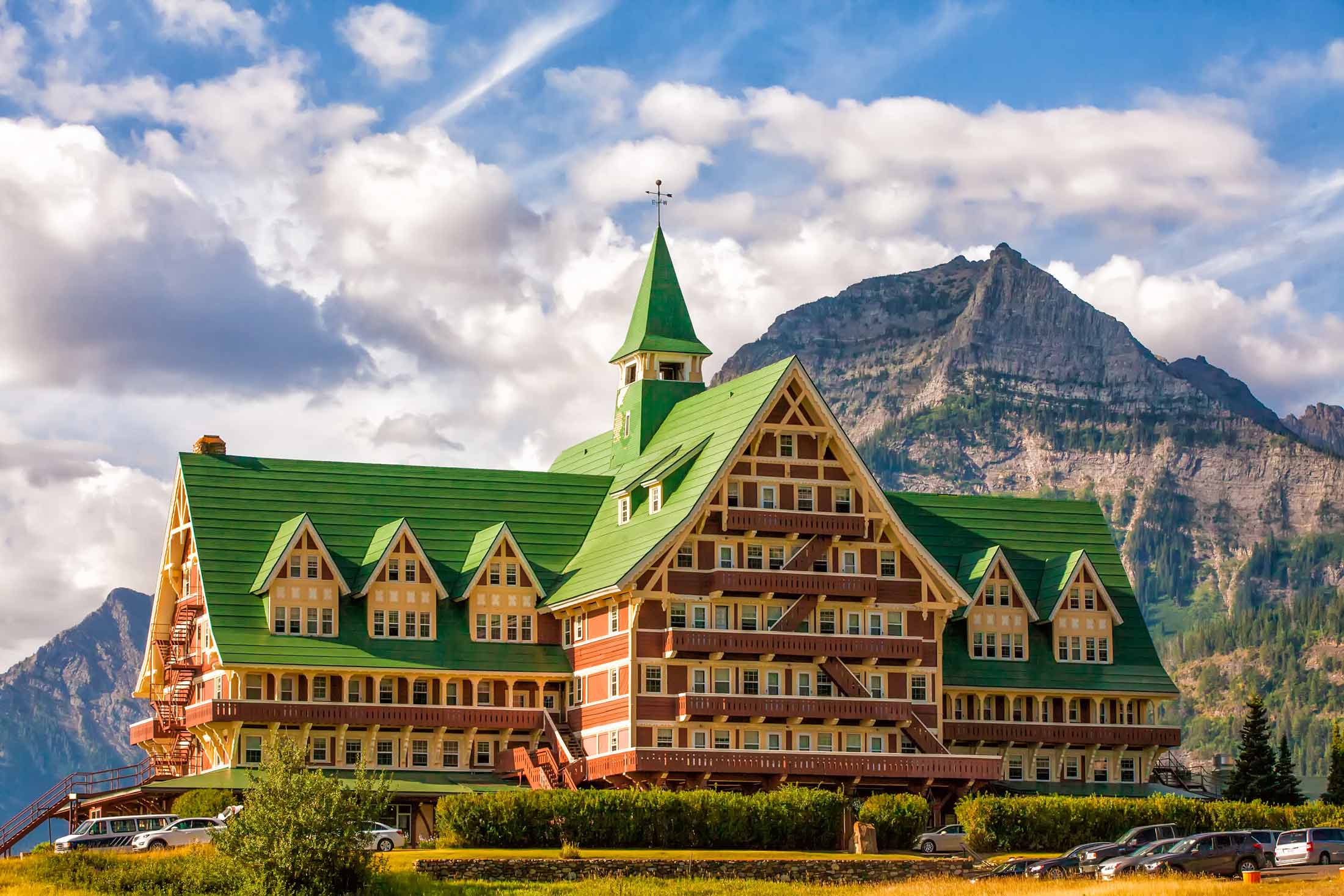
STOPS:
- 19Calgary
- 20Head-Smashed-In Buffalo Jump World Heritage SIte
- 21Waterton Lakes National Park
- 22Waterton
- 23Prince of Wales Hotel
Today is another recommended early start and a bit of a travel day as you make your way through Alberta on Highway A1 east towards Calgary, the largest city in Alberta. Stop and see this cosmopolitan city. Memorial Drive along the Bow River offers views of local bikers, runners and walkers. Calgary is still steeped in western tradition and culture evident in its massive July Rodeo, The Calgary Stampede.
Continue south on AB 2 towards Fort MacLeod. Take AB 785 to the interpretive center, Head-Smashed-In Buffalo Jump World Heritage Site. This archaeological site built right into the cliffs preserves the remarkable history of the Plains People. Due to their understanding of the bison behavior and regional topography, they hunted bison by stampeding them off cliffs. Learn about the history, dependence and admiration the Plains People had for the buffalo. In 1981 the United Nations Educational Scientific and Cultural Organization (UNESCO) designated this site a World Heritage Site, placing it among other monuments such as the Egyptian pyramids, Stonehenge and Galapagos Islands.
Continue south on AB 3 and AB 6 to Waterton Lakes National Park and part of the Waterton-Glacier International Peace Park where Montana’s Glacier National Park and Alberta’s Waterton Lakes National Park meet at the border between the United States and Canada. Designated the first International Peace Park in 1932, Waterton commemorates the bonds of peace and friendship between the two nations. The two national parks work together to manage their natural and cultural resources, and in 1995 Waterton-Glacier International Peace Park was designated a World Heritage Site much like the Taj Mahal and Great Barrier Reef.
There are plenty of activity options in Waterton Lakes National Park. Visit Red Rock Canyon, hike to Cameron Falls or take in the beauty of Cameron Lake. Stroll the town site of Waterton for great Canadian gifts, and don’t forget to stop in Wieners of Waterton for a gourmet hot dog with homemade sauces. Reserve your spot on one of the vessels at Waterton Shoreline Cruise Co. and cruise from Canada across the border into the United States. Listen to experienced local guides give informative and entertaining commentary for the two-hour cruise. July through mid-September the boat will stop at Goat Haunt—the northern gateway to the wilderness of Glacier National Park. Guests are invited to disembark for half an hour. For those wanting to stay and hike (returning on the next boat) proper ID is required to clear customs.
While there are options for your overnight stay, we recommend a room at a true historic icon, the Prince of Wales Hotel. As one of the most photographed hotels in the world, the Prince of Wales Hotel sits on a bluff with stunning views of Waterton Lake, Waterton Lakes National Park and Glacier National Park.
Day 6: Glacier National Park (east side)
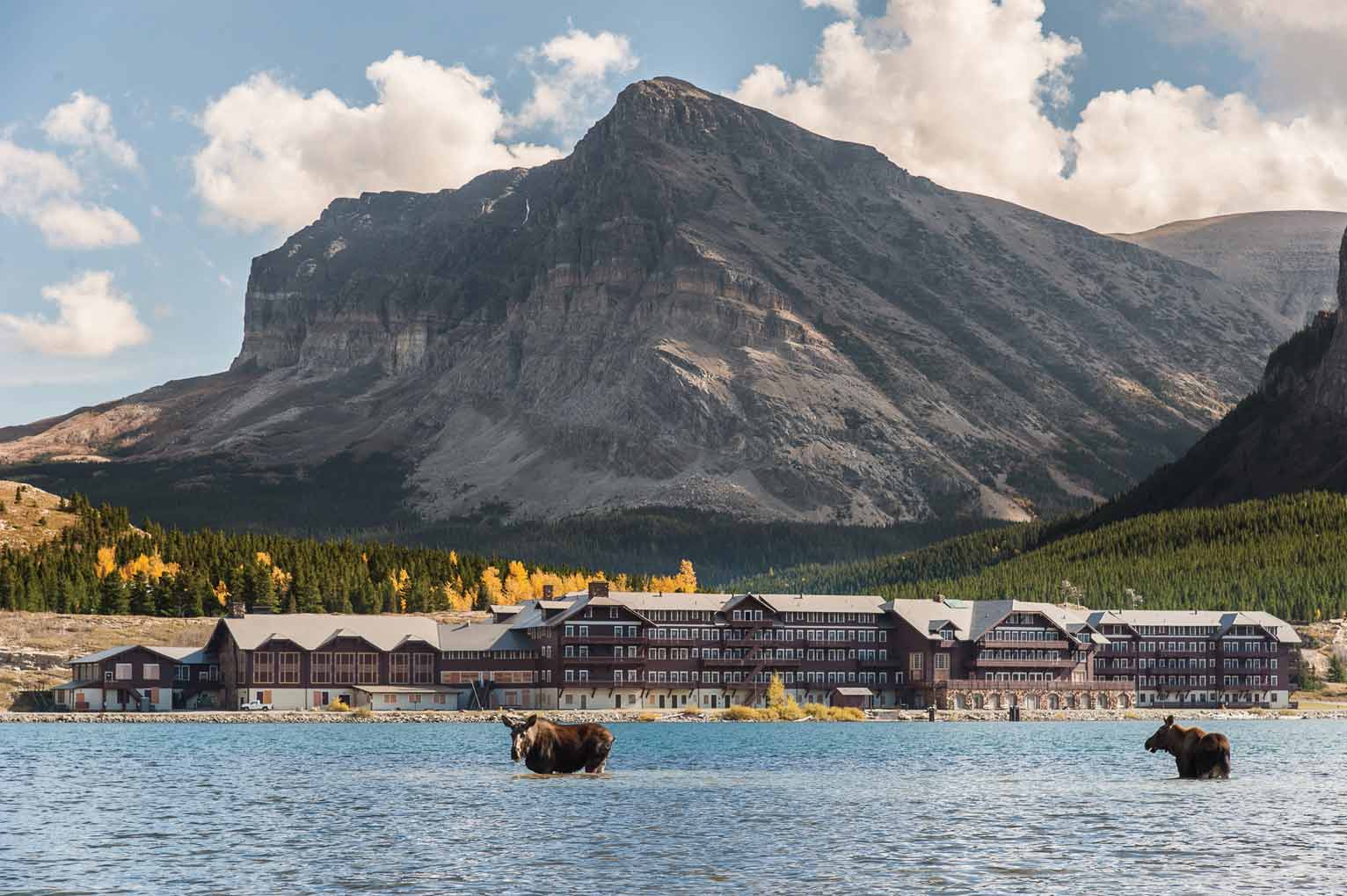
STOPS:
- 24Glacier National Park (East Side)
- 25Many Glacier
- 26Many Glacier Hotel
- 27St. Mary
- 28Browning
- 29Glacier Park Lodge
- 30West Glacier
There are two border crossings into the U.S. from Waterton Lakes National Park. The most convenient is Chief Mountain Border Crossing on AB 6 crossing over onto Montana Highway 17. However, it is a seasonal crossing only open May 15 to September 30, from 9 a.m. to 6 p.m. Dates and times may vary. Several miles east utilizing AB 2 and U.S. Highway 89 is the Peigen/Carway border crossing, open daily, 7 a.m. to 11 p.m. year-round.
Head south on U.S. Highway 89 for a scenic drive down the east side of the magnificent Rocky Mountains and discover the Crown of the Continent or what the Blackfeet Indians call the “Backbone of the World.” East of here, the alpine beauty begins to fade into high plains, wide-open spaces and small towns.
Just beyond Babb is the Many Glacier entrance to Glacier National Park, which leads to Many Glacier Hotel. Stop in to visit the historic lodge, a majestic site to behold. This would be a good day to combine a boat tour on Swiftcurrent Lake and a day hike to Grinnell Glacier, catching another boat back after the hike. Some of the best wildlife spotting happens in the Many Glacier area. Be sure to bring bear spray. Please not that a vehicle reservation is needed to enter the Many Glacier Area.
Stop at the St. Mary Visitor Center to gather daily information on park activities, open trails and wildlife watching areas. The east side of the park offers wonderful day-hiking opportunities and interpretive boat tours with Glacier Park Boat Company on Two Medicine Lake, St. Mary Lake and Swiftcurrent Lake. Please note that a vehicle reservation is needed to enter the Two Medicine and Many Glacier areas as well as St. Mary after Rising Sun.
If time allows, take a trip into Browning, the largest city on the 1.5 million-acre Blackfeet Indian Reservation. Exhibits of cultural artifacts at the Museum of the Plains Indian are among the finest in the West, and the Lodgepole Gallery features traditional and contemporary arts and crafts.
Stop in East Glacier Park with a visit to Glacier Park Lodge to see the grand hotel architecture built by the Great Northern Railway in 1912.
Travel the park’s southern boundary along U.S. Highway 2. Visit the small town of West Glacier before heading towards the west entrance of Glacier National Park.
Overnight at Lake McDonald Lodge or Belton Chalet.
Day 7: Glacier National Park (west side)
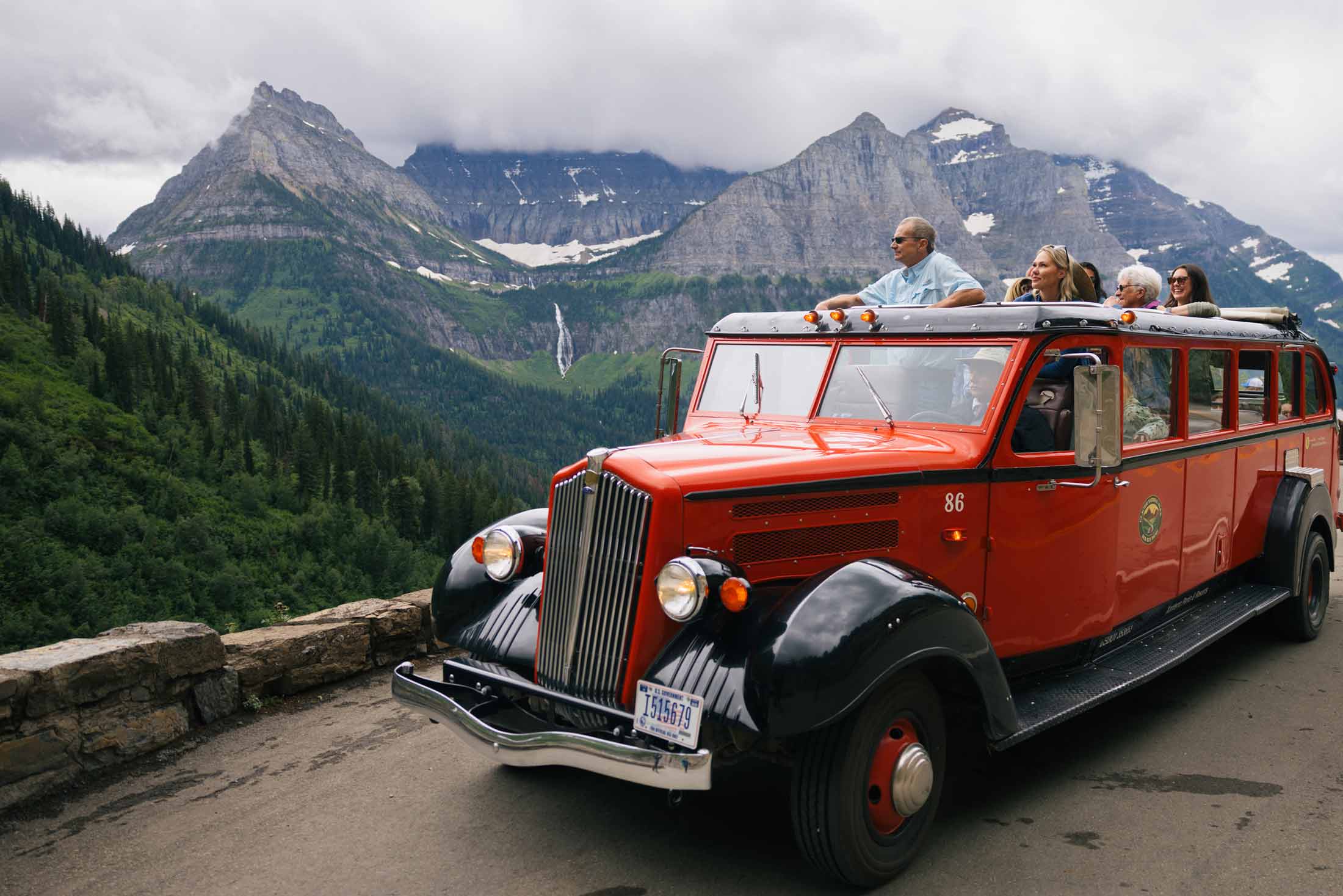
STOPS:
- 31Glacier National Park (West Side)
- 32Going-to-the-Sun Road
- 33Trail of the Cedars
- 34Belton Chalet
You’d be hard pressed to find a more scenic drive in the lower continental United States than the Going-to-the-Sun Road in Glacier National Park. A wilderness of alpine lakes, towering peaks and remnants of glaciers is readily accessible. Hop aboard a red bus tour of this famous, scenic road. The historic canvas-top tour buses were introduced in the 1930s and have since been restored and outfitted with propane engines as a gift from the Ford Motor Company. The red bus drivers, known as Jammers, are your tour guides and provide information about the park’s flora and fauna, history, geology and glaciology. The tours are reasonably priced and run from 2.5 to 9.5 hours with a multitude of tour options. Red bus tours pick up from several locations on the east side and west side of Glacier National Park; check their website for tours and pickup options. Another tour option is Sun Tours, which tells the perspective of the Blackfeet Indians and the emphasis Glacier National Park has had on the Blackfeet Nation throughout the centuries. NOTE: The Going-to-the-Sun Road traverses a high mountain pass and, due to weather restrictions, is only open from the end of June to the middle of October (weather permitting). Please note that a vehicle reservation is required to drive the Going-to-the-Sun Road. Also, private vehicles longer than 21 feet and wider than 8 feet are prohibited.
If time allows, take a scenic boat tour on Lake McDonald or a guided horseback trail ride with Swan Mountain Outfitters or hike the most popular trails on the west side, Trail of the Cedars and Avalanche Lake Trail. Make a reservation at the historic Belton Chalet (built in 1910) for a gourmet dinner in the lovely dining room.

